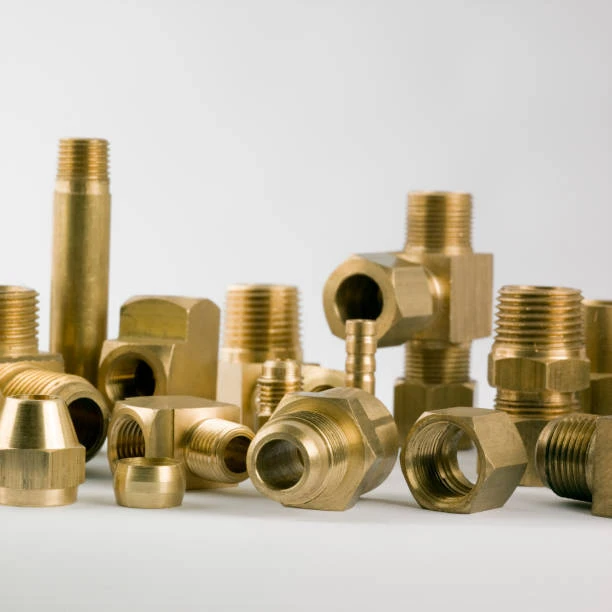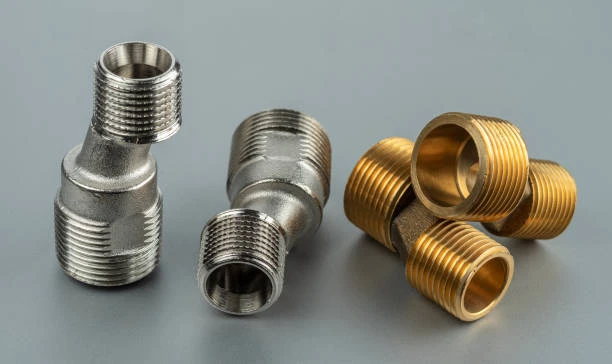
Plastic and brass fittings each offer distinct advantages, making them suitable for different applications. Let’s explore the benefits of these materials to help you make an informed decision.
What are Plastic and Brass Fittings?
Definitions and Composition
They are typically made from various polymers such as PVC, CPVC, or PEX, while brass fittings are composed of a copper-zinc alloy. Each type has unique properties that cater to specific needs in plumbing, construction, and other industries.
Common Applications
Plastic fittings are often used in irrigation, drainage systems, and residential plumbing. Brass fittings, on the other hand, are commonly found in high-pressure applications, heating systems, and places where aesthetics matter, such as exposed plumbing fixtures.
Benefits of Using Plastic Fittings
- Corrosion Resistance: Plastic doesn’t rust or corrode, which makes it ideal for systems exposed to moisture or chemicals. This feature can extend the life of your plumbing system.
- Cost-Effectiveness: Generally, plastic these are more affordable than brass options, making them a popular choice for budget-conscious projects.
- Versatility in Applications: Plastic fittings can be used in various applications, from plumbing to electrical conduits, due to their flexibility and resistance to various chemicals.
Benefits of Using Brass Fittings
- Strength and Durability: Brass is a robust material that can withstand significant wear and tear. It’s ideal for high-pressure systems where strength is crucial.
- Heat and Pressure Resistance: Brass fittings excel in high-temperature and high-pressure applications, making them suitable for heating systems and industrial use.
- Aesthetic Appeal: Brass fittings have a classic, polished look that can enhance the visual appeal of plumbing systems, making them a favorite for decorative applications.
- Environmental Resistance: Brass is less susceptible to certain environmental factors, such as UV light, making it suitable for outdoor applications.
Comparative Analysis: Plastic vs. Brass Fittings
- Strength and Durability: Brass is generally stronger and more durable than plastic, particularly in high-stress environments. However, plastic can perform adequately in many standard applications.
- Installation and Handling: Plastic fittings are easier to install due to their lightweight nature, while may require more careful handling to avoid damaging threads.
- Cost Considerations: While plastic fittings tend to be more affordable upfront, brass fittings may offer better long-term value due to their durability and resistance to wear.
- Long-Term Performance: Brass fittings typically have a longer lifespan in high-pressure situations, whereas plastic fittings are excellent for low-pressure systems.
Environmental Impact
- Sustainability of Plastic vs. Brass: They are made from a recyclable metal, whereas plastic can also be recycled but often have a larger environmental footprint due to their production processes.
- Recycling Options: Both materials have recycling options, but the ease and efficiency can vary based on local facilities and practices.
Choosing the Right Fittings for Your Needs
- Application Requirements: Identify the pressure, temperature, and chemical exposure your fittings will face.
- Budget Constraints: Evaluate your budget, factoring in both initial costs and potential long-term savings.
- Aesthetic Preferences: For visible installations, brass may be preferred for its aesthetic qualities.
Conclusion
Plastic fittings shine in terms of cost and ease of installation, while it excel in durability and high-pressure situations. By understanding the advantages of each material, you can make an informed choice that meets your specific needs.
FAQs
- What are the main advantages of plastic fittings?
Plastic fittings are lightweight, corrosion-resistant, cost-effective, and versatile for various applications. - Why should I choose brass fittings?
Brass fittings offer superior strength, heat resistance, and aesthetic appeal, making them ideal for high-pressure and decorative applications. - Can both types of fittings be recycled?
Yes, both plastic and brass fittings can be recycled, but the processes and facilities may vary by location. - Which fittings are easier to install?
Plastic fittings are generally easier to handle and install due to their lightweight nature. - How do I choose the right fitting for my plumbing system?
Consider factors like application requirements, budget, and aesthetic preferences when selecting fittings.

















